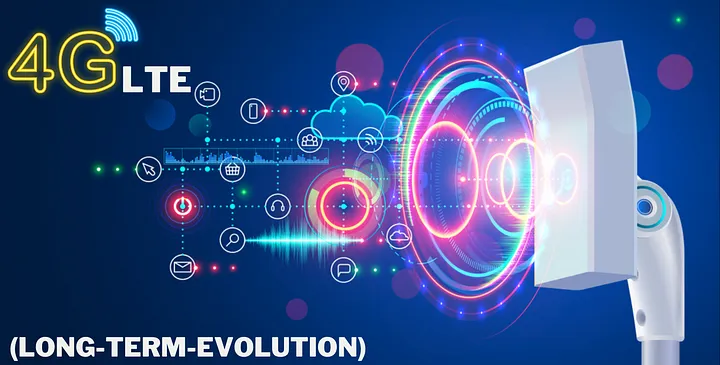Welcome to a series of articles dedicated to exploring the world of support for mobility and geolocation services in the mining industry. In this collection, we will delve into various aspects of this vital technology and gradually progress from general concepts to more specialized and technical considerations. Whether you are a mining professional, a technology enthusiast, or simply curious about the intersection of mining and telecommunications, this series aims to provide you with valuable insights and answers to your burning questions.
- What is Support for Mobility and Geolocation Services in Mining?
Support for mobility and geolocation services in mining refers to the implementation of technologies and systems that enable seamless movement and accurate positioning of assets, personnel, and equipment within mining operations. It involves the use of wireless communication networks, geolocation technologies, and related software applications to enhance situational awareness, improve safety, optimize resource management, and increase operational efficiency in the mining industry.
- How does Support for Mobility and Geolocation Services apply to Local LTE?
Support for mobility and geolocation services plays a crucial role in the implementation of local LTE (Long-Term Evolution) networks within the mining industry. Local LTE refers to a private wireless network that enables high-speed data communication and advanced functionalities tailored specifically to the mining environment. We will explore how support for mobility and geolocation services enhances the capabilities of local LTE networks and contributes to improved safety, efficiency, and productivity in mining operations.
- What are the roles of Local LTE in Support for Mobility and Geolocation Services in Mining?
Local LTE networks provide a robust foundation for the deployment and operation of support for mobility and geolocation services in mining. They offer reliable and secure wireless connectivity, enabling seamless communication between mobile devices, equipment, and personnel across vast mining sites. We will uncover the key roles that local LTE networks play in facilitating the implementation of mobility and geolocation services and their impact on operational effectiveness and safety in mining operations.
- What are the Use Cases of Support for Mobility and Geolocation Services in Mining?
Support for mobility and geolocation services finds a multitude of applications in the mining industry. From real-time tracking of assets and personnel to remote monitoring of equipment and environmental conditions, these services enable enhanced situational awareness, better resource management, and improved decision-making. Throughout this series, we will explore various use cases to showcase the practical implications and benefits of these services in mining operations.
- What is the Mechanism behind Support for Mobility and Geolocation Services in Mining, and why is it required?
Understanding the underlying mechanism of support for mobility and geolocation services in mining is crucial for grasping their significance and potential impact. We will delve into the technological foundations, including the utilization of advanced geolocation algorithms, communication protocols, and sensor networks. By exploring the mechanisms, we will shed light on why these services are essential for addressing the unique challenges faced in mining environments, such as the need for real-time asset tracking, emergency response coordination, and efficient resource allocation.
- How can Local LTE networks enhance Support for Mobility and Geolocation Services in Mining?
Local LTE networks provide a robust infrastructure that enables the seamless integration of support for mobility and geolocation services in mining operations. By offering high-speed, low-latency connectivity, local LTE enhances the accuracy and responsiveness of geolocation services. It enables real-time tracking of assets and personnel, facilitates reliable communication between mobile devices and central control centers, and supports the transmission of large volumes of geospatial data. Additionally, local LTE ensures secure and private communication, mitigating potential interference from external networks and optimizing overall system performance.
- What are the Benefits of Support for Mobility and Geolocation Services in Mining Enabled by Local LTE?
The integration of support for mobility and geolocation services through local LTE networks brings numerous benefits to mining operations. These include:
- Improved Safety: Real-time asset and personnel tracking enhance safety protocols, enabling timely response to emergencies and ensuring efficient evacuation procedures. Geolocation services can also assist in detecting hazardous areas and preventing unauthorized access to restricted zones.
- Enhanced Productivity: By providing accurate location data and enabling effective communication, support for mobility and geolocation services improves coordination among team members, streamlines workflow, and minimizes downtime. This results in optimized operational efficiency and increased productivity.
- Efficient Resource Management: Geolocation services integrated with local LTE networks enable precise monitoring and management of mining equipment and resources. Real-time data on equipment utilization, maintenance needs, and location help optimize resource allocation, preventive maintenance, and scheduling, reducing costs and maximizing equipment lifespan.
- Environmental Monitoring: Support for mobility and geolocation services can be leveraged for monitoring environmental conditions within mining sites. This allows for early detection of potential risks, such as gas leaks or unstable terrain, enabling proactive measures to ensure worker safety and minimize environmental impact.
- What are the Challenges and Considerations in Implementing Local LTE for Support for Mobility and Geolocation Services in Mining?
While the integration of local LTE networks and support for mobility and geolocation services brings significant benefits, there are challenges to consider:
- Infrastructure Deployment: Setting up the necessary infrastructure for local LTE networks, including base stations, antennas, and backhaul connectivity, can be complex and require careful planning to ensure optimal coverage and performance across the mining site.
- Interference Management: Mining environments often have numerous potential sources of radio interference, including heavy machinery and geological formations. Implementing effective interference management strategies is crucial to maintain reliable connectivity and accurate geolocation data.
- Scalability and Integration: As mining operations expand or new technologies are introduced, scalability and seamless integration become essential considerations. Local LTE networks should be designed to accommodate future growth and enable integration with other mining systems and applications.
In conclusion, this introductory article has provided a glimpse into the fascinating world of support for mobility and geolocation services in the mining industry. We have explored the fundamentals of these services, their application to local LTE networks, and the roles they play in improving safety, productivity, and resource management in mining operations. Additionally, we have touched upon the benefits of integrating support for mobility and geolocation services through local LTE, such as enhanced situational awareness and efficient communication. We have also acknowledged the challenges and considerations involved in implementing local LTE networks for these services, including infrastructure deployment and interference management. As we continue this series, we will delve deeper into each topic, offering more specialized insights to equip you with a comprehensive understanding of support for mobility and geolocation services in mining. Stay tuned for the next installment, where we will explore the technological mechanisms behind these services and their practical implications.




